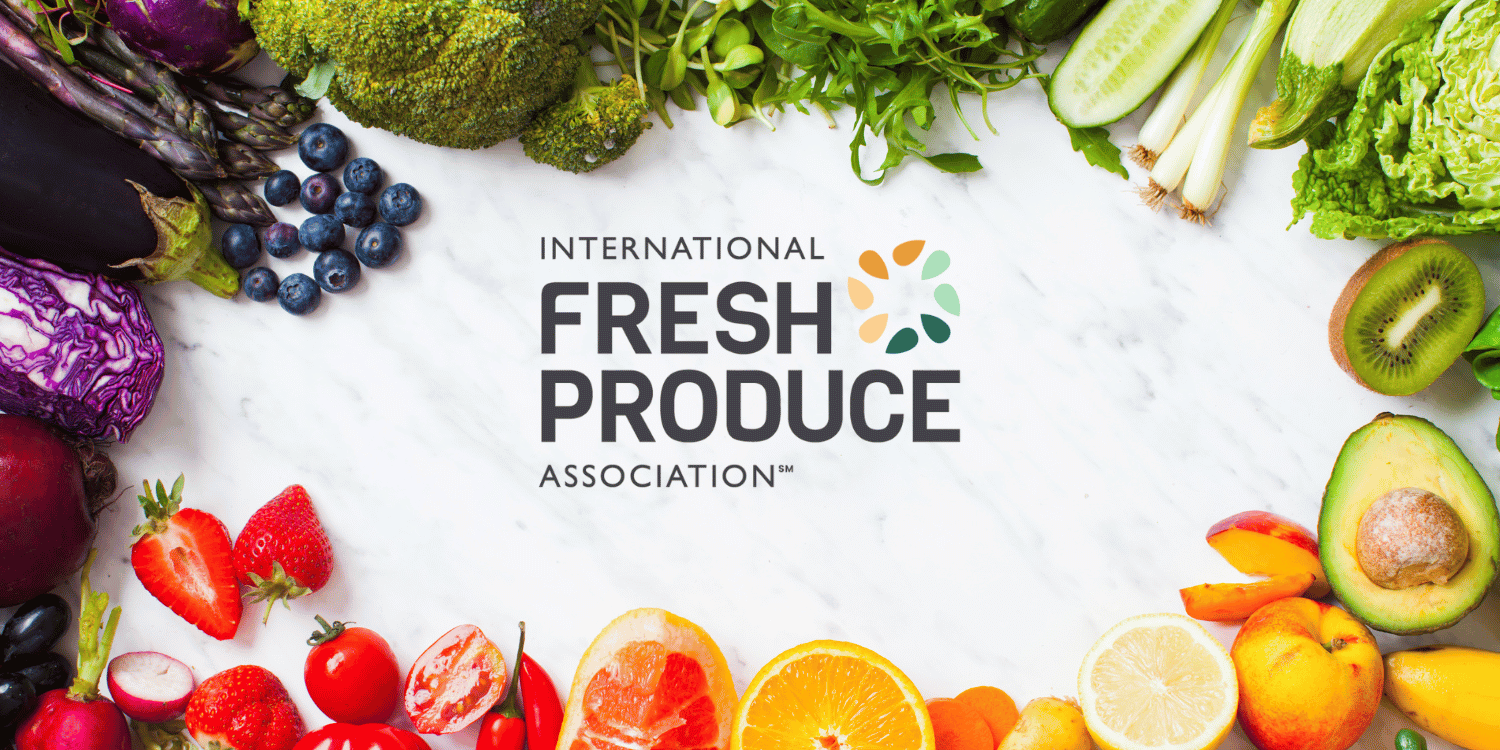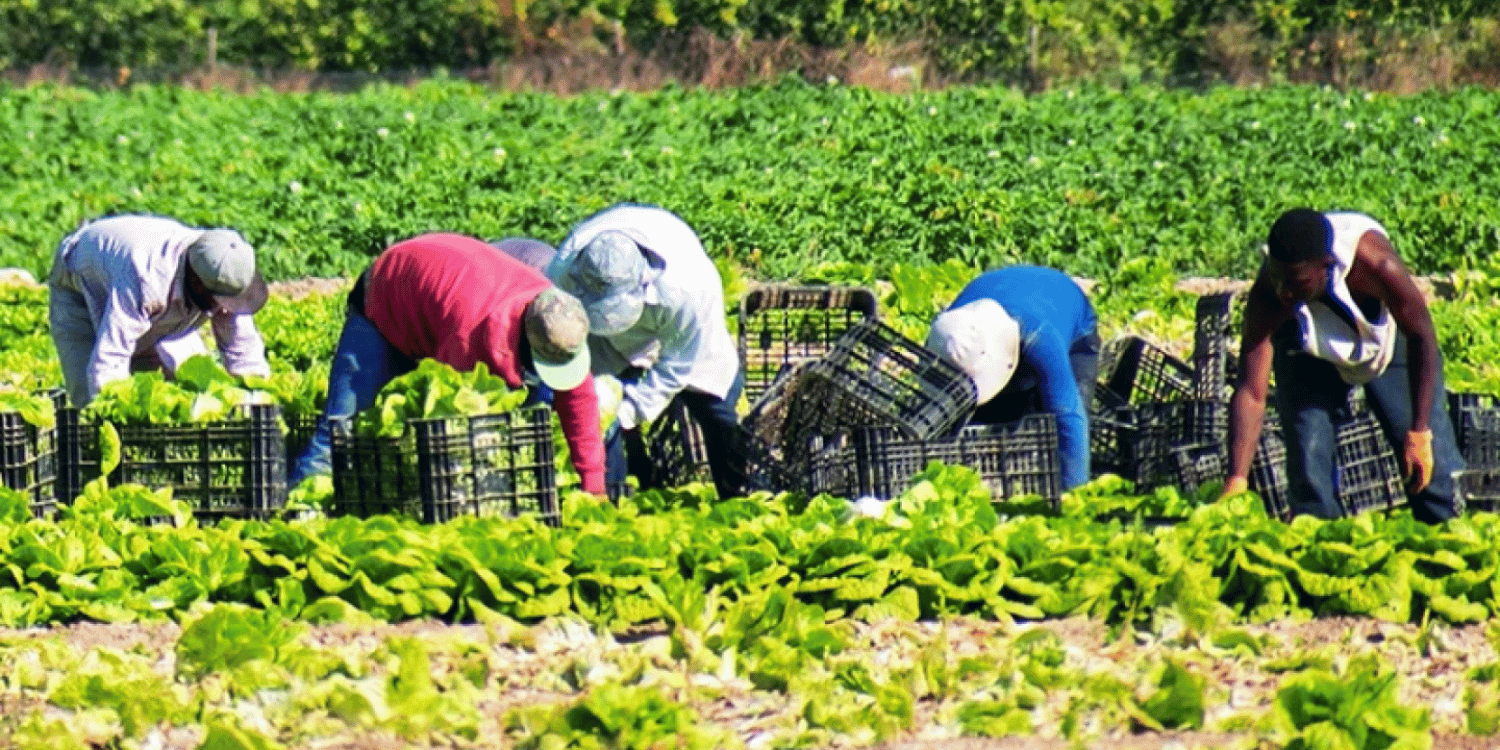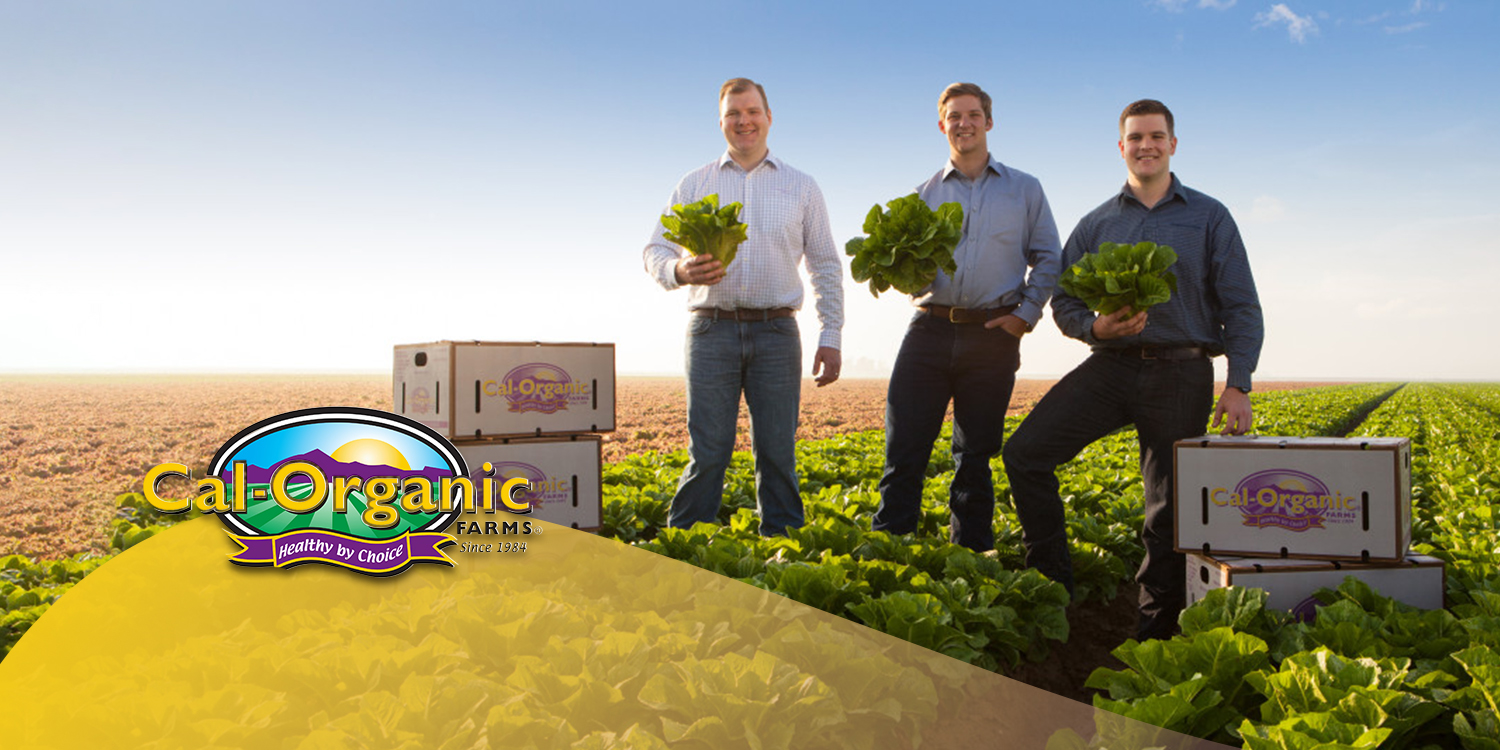The process of acquiring organic certification, though rewarding, presents a myriad of obstacles for modern-day farmers.
These challenges have far-reaching implications that go beyond the realm of farming and impact consumers, retailers, and the environment.
In an ever-evolving global market, being officially recognized as ‘organic’ carries substantial weight.
However, the path to achieving this status and maintaining it is often strenuous and fraught with complexities.
This discourse sheds light on these challenges, bringing to the fore the barriers farmers need to surmount to earn this innovation-led certification.
Understanding these intricacies is imperative, not only for the farming community, but also for stakeholders who influence agricultural policies and practices.
- High costs associated with obtaining organic certification.
- Unprofitable transition periods required for certification.
- Challenges in implementing organic farming methods.
- Difficulties in sourcing organically certified feed and seeds.
- Struggles to maintain soil fertility using natural methods.
Beyond these fundamental challenges, our exploration doesn’t stop here.
Still ahead, we will shed light on additional complexities such as market access for organic produce and consumer perception of organic farming.
This understanding will offer you a deeper insight into the often overlooked realities of transitioning towards organic farming.
We encourage you to keep going, as each section will enrich your understanding of the intricate landscape of organic certification.
Challenges Of Organic Certification For Farmers
1. High cost of organic certification
In Short: Organic certification can impose substantial financial pressure on farmers due to the strict compliance regulations and the costs associated with implementing and maintaining organic farming practices. This high cost can deter small-scale farmers and those with limited funds, but careful planning and understanding of the benefits of organic farming may justify this initial investment.
The process of organic certification is an intricate one, accompanied by a hefty financial burden.
While organic farming practices are known to be environmentally friendly and beneficial to consumer health, obtaining certification to validate this organic status comes with its own difficulties.
Above all, one of the most significant hurdles is the exorbitant cost that farmers need to bear.
This is primarily due to the strict regulations and standards set by organic certification bodies, which necessitate substantial financial investment for farmers to comply.
The comprehensive planning, implementing, and maintaining of organic farming practices not only require a physical commitment, but also a financial one.
Such costs can be particularly daunting for small-scale and low-income farmers, who may find it nonviable to afford the certification process.
In some cases, these costs can serve as a significant deterrent, discouraging farmers from converting to organic farming methods.
Besides the high costs associated with annual inspections and paperwork, farmers might need to spend more on new equipment and infrastructure.
The disruption caused to the usual farming activities during the transition period to organic practices can further increase the cost associated with the certification process.
Special training might be required for the farmers and the staff to ensure compliance with the stringent organic practices, adding to the burden.
However, it’s important to note the various factors that contribute to the overall cost of organic certification. The following are some of them:
- The Size of the farm: Larger farms usually entail higher certification fees.
- Location – Depending on the country or state, the costs can fluctuate. Some places offer subsidies or grants that can reduce the certification cost.
- The complexity of operations: Farms with a wider variety of crops or livestock may require more rigorous inspections, leading to higher costs.
These factors vary dramatically from one farm to another, making it difficult to establish a universal cost figure for organic certification.
Therefore, it is crucial for farmers to analyse their situation carefully before venturing into organic farming, to ensure they can sustain the high cost of certification without risking financial stability.
It is evident that the costly nature of organic certification poses a significant challenge for farmers considering organic farming.
Pro Tip: The process of obtaining organic certification for farms is a challenging and expensive task due to stringent regulations and standards, and it can be particularly burdensome for small-scale and low-income farmers who may struggle to afford the significant financial investment this certification commands.
However, understanding this challenge and planning ahead for it could potentially increase their chances of successful adoption of organic farming practices and securing certification.
Despite the financial hurdle, the benefits that come with organic farming, both for the environment and consumer health, are significant, and may justify this initial cost.
2. Required Transition Period Without Profits
In Short: Obtaining organic certification involves a transition period, typically three years, during which farmers must adopt organic practices and cannot yet profit from selling organic products. This period involves financial challenges, including higher capital investment, labor costs, yield decrease, and economic uncertainties related to the volatility of organic food markets.
The process of obtaining organic certification presents a number of unique challenges, one of the most significant being the required transition period without profits.
This is a phase during which farmers must adopt organic practices for a specified period of time, typically three years, before the products can be sold as certified organic.
The transitioning period mandates the complete cessation of synthetic chemicals, a switch to organic-approved substances, and adherence to a host of other requirements.
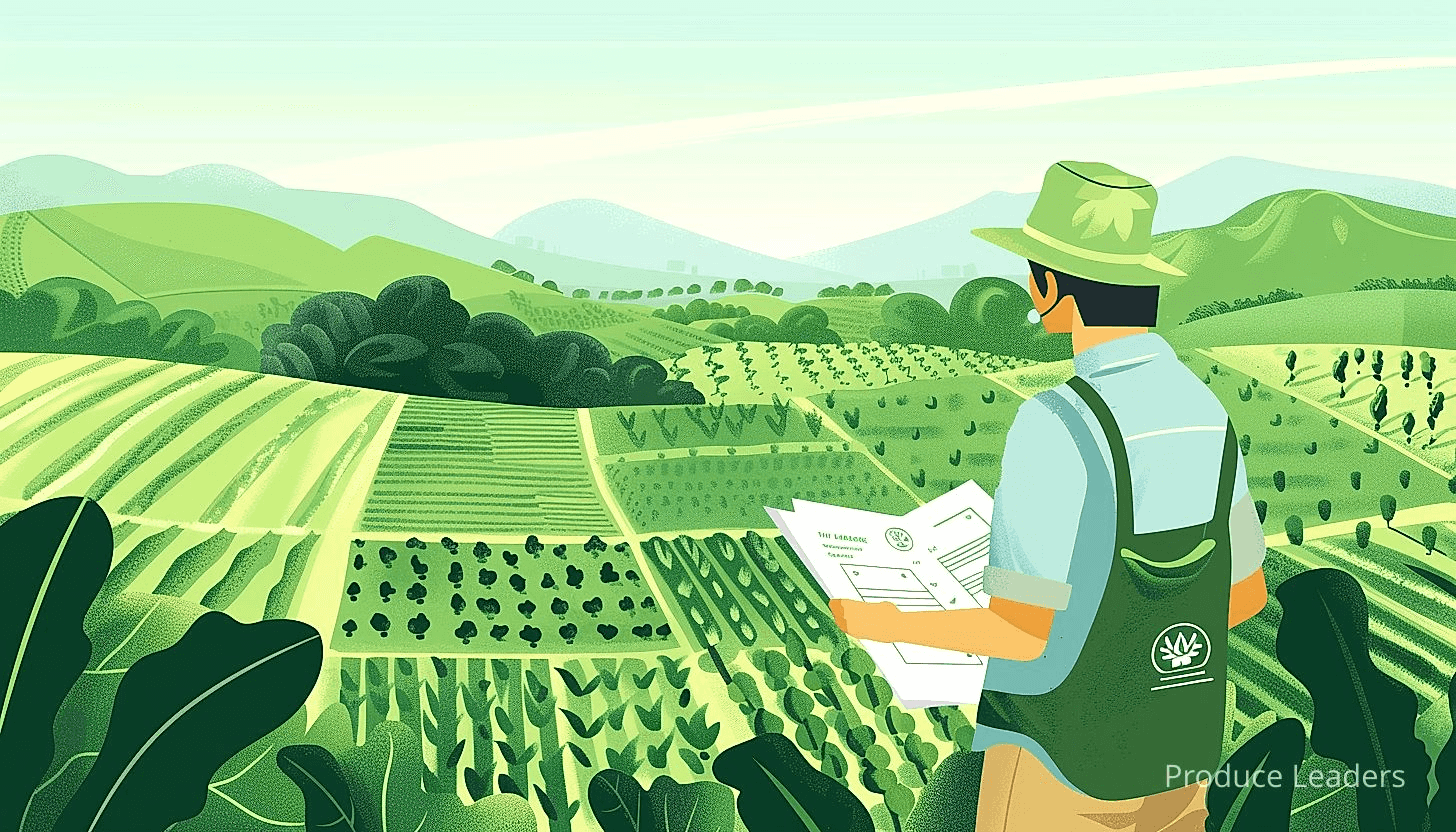
This timeframe can place a significant financial burden on farmers as they are still bearing the full costs of organic farming methodologies, but cannot yet command the premium prices typically associated with organic goods.
The challenges posed during this transition period can be broadly categorized under several key areas.
- Capital investment: Organic farming generally requires a greater outlay of capital for equipment and organic inputs.
- Labor costs: The nature of organic farming often demands more hands-on time in the fields, translating to higher labor costs.
- Yield decrease: Yields can potentially decline during the transition period due to the change in farming practices and the time it takes for soils to build up nutrients.
This challenging transition not only tests a farmer’s financial resilience but also their commitment towards adopting sustainable farming practices.
Some farmers may consider the transition period as a deterrent, given the economic uncertainty that accompanies this phase.
Besides, the volatility of organic food markets can exacerbate the financial difficulties posed by the transition period.
This dilemma often raises a critical question about how manageable the transition period is for farmers who may already be functioning on thin profit margins.
From another perspective, organic certification necessitates a nuanced understanding of organic standards and requirements, which can be difficult to navigate without appropriate training and guidance.
Farmers may need to invest time and resources in training themselves and their staff, which adds another layer to the overall cost- and resource-intensive process.
The regulatory pressure and higher costs can be a major roadblock to a farmer’s decision to transition, considering the profits are not immediately accrued.
This aspect of the transition period embodies one of the inherent tensions in organic certification – the gap between the immediate costs and the long-term, often uncertain, benefits.
However, it’s worth noting that this demanding period often pays off in the long run, the superior quality of organic produce, the potential for premium pricing, and the environmental benefits are well worth the initial challenge of the transition phase.
At the end of the day, how farmers navigate this transition period depends largely on their financial resilience, their commitment to sustainable agriculture, and their ability to manage risk in an inherently precarious industry.
3. Implementing Organic Farming Methods
In Short: Transitioning from conventional to organic farming is a challenging process, involving a complete change of farming practices to more natural alternatives, such as natural pest management, composting and organic livestock care. Despite organic farming’s environmental and economic benefits, the switch requires continuous learning, mindset shift, and potentially facing initial yield losses, necessitating support and collaboration among farmers and guidance from agricultural service providers.
Arguably, one of the most challenging aspects surrounding organic certification for farmers is in the implementation of organic farming methods.
Successful transition from conventional farming to organic requires a complete overhaul of current farming practices, from the use of synthetic fertilizers and pesticides to more natural alternatives.
This task is by no means easy and can be overwhelming to farmers already grappling with the many challenges that come with farming in and of itself.
First and foremost, organic farming methods involve biological diversity to upkeep soil productivity which demands a comprehensive understanding of eco-friendly farming practices.
Let’s dive into the various elements that constitute the implementation of organic farming methods:
- Natural pest management: Unlike conventional farming which utilizes synthetic pesticides, the organic farming approach calls for pest management strategies that include crop rotation and other practices to maintain a balanced ecosystem.
- Compost and green manure: Organic farmers have to turn to compost and green manure as substitutes for synthetic fertilizers. Being able to efficiently produce good quality, nutrient-rich compost is crucial to ensure the health and productivity of the soil.
- Livestock management: Managing organic livestock encompasses the use of organic feed, adhering to specific standards for living conditions that accommodate natural behaviors to promote animal health and welfare.
This transition demands the need for continuous learning and a keen sense of adaptation on the part of the farmer.
It calls into the fray a variety of skills like composting, cover cropping and integrated pest management that aren’t standard practice in conventional farming.
The passage to organic methods requires a deep understanding of the natural systems at play, from soil microbiology to insect ecology.
Moreover, there’s a necessary shift in mindset, wherein the farmer becomes more a steward of nature rather than a conquerer.
What this means is that farmers have to take on a more hands-on, proactive approach in managing their land to create a sustainable farming environment.
The truth, in short, is that although organic farming has its fair share of rewards, both environmental and economic, the shift to implementing organic farming methods can prove to be a testing challenge.
Not to mention that while transitioning, the farmer must also be able to deal with any losses in the yield during the initial years of the transition.
Pro Tip: Transitioning to organic farming requires a deep understanding of eco-friendly practices and the willingness to shift from conventional farming to natural alternatives like pest management strategies, use of compost and green manure, and organic livestock management.
Thus, it’s not a challenge that can necessarily be overcome overnight or in isolation.
It may call for support and collaboration among farmers, as well as guidance from agricultural extension service providers and other relevant parties to manage and mitigate the trials of implementing organic farming methods.
4. Finding Organic Sources for Feed and Seeds
In Short: Obtaining organic seeds and feed is vital for organic certification but presents challenges due to availability, cost, lack of variety, and inconsistent quality. Despite initial high costs and potential yield reduction, the transition to organic farming is worthwhile for many farmers due to environmental benefits, improved soil health, and higher market value of organic produce.
Finding organic sources for feed and seeds is one of the most critical steps in the journey towards organic certification and yet, one of the most challenging.
This essentially means that farmers cannot use any genetically modified organisms (GMOs) or non-organic seeds in their production.
They must source seeds, animal feed, and even livestock from certified organic sources.
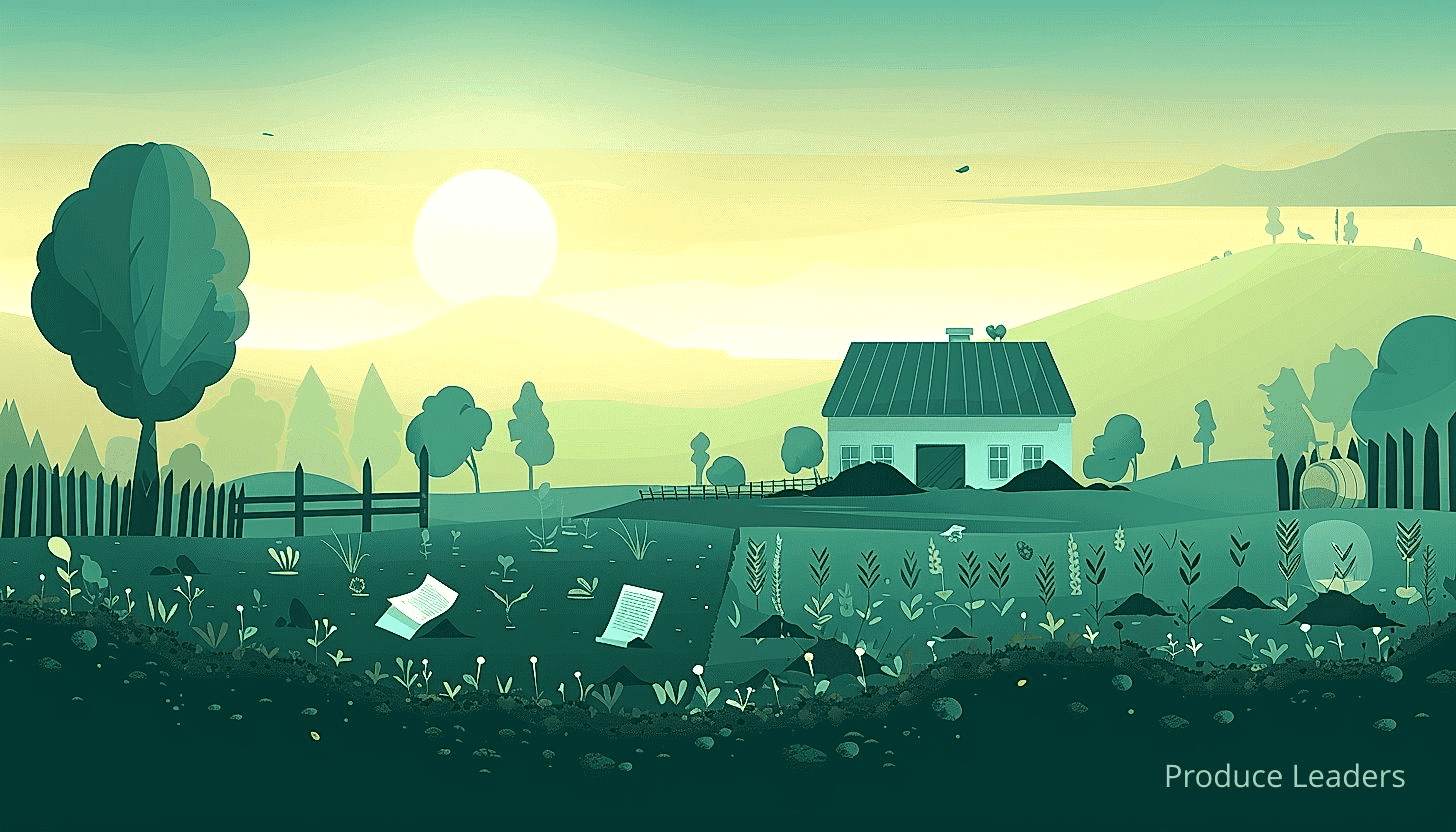
Strict organic certification rules ensure that every component of the agricultural production process remains true to organic principles.
Not only is the availability of organic seeds and feed limited, but they also tend to be more expensive than their non-organic counterparts.
This makes the initial costs for farmers looking to transition to organic farming quite high.
Moreover, certain specific organic varieties might not be commercially available, forcing farmers to change the type of crops they grow or livestock they raise.
Let’s dig in into some of the specific challenges of finding organic sources for feed and seeds. Following are some of the key issues that farmers often grapple with:
- Availability: It can be difficult to find suppliers who sell organic seeds and feed. The relatively small market for these products means there are fewer producers and retailers who cater to this sector.
- Cost: Organic seeds and feed are often more expensive than their conventional counterparts. This cost difference can be a significant hurdle for small and medium-sized farms.
- Variety: There is often less variety available in organic seeds and feed. This can limit a farmer’s ability to grow a diverse range of crops.
- Quality: Since the market for organic seeds and feed is still developing, the quality can sometimes be inconsistent, causing further challenges for farmers.
Compounding these issues is the potential yield reduction that occurs when shifting from conventional to organic farming practices.
According to research, organic crops tend to produce lower yields compared to conventional crops.
This is largely due to the limited availability of rich organic fertilizers and effective organic pesticides and herbicides.
As a consequence, farmers must often confront the dual challenge of finding quality organic seeds and managing lower yields.
Finding organic sources for feed and seeds definitely calls for a thorough understanding of the market dynamics, as well as a commitment to the principles of organic farming.
Important: Finding organic sources for feed and seeds, which strictly adhere to organic certification rules prohibiting GMOs or non-organic seeds, is a significant challenge due to factors like limited availability, higher costs, limited variety, inconsistent quality, and potential yield reduction.
Nevertheless, the payoff, in the long run, can be significant, not only in terms of a higher price premium for organic produce but also in added environmental benefits and improved soil health.
Despite all the complexities involved, more and more farmers worldwide are embracing organic farming, suggesting that these challenges are not insurmountable.
5. Maintaining soil fertility naturally
In Short: Organic farmers face the significant task of maintaining soil fertility naturally, with methods such as organic matter management, crop rotation, managing soil biota, and using green manure or compost. This process can be labor-intensive and challenging, particularly in sourcing natural alternatives for synthetic fertilizers and navigating the initial drop in crop productivity during the transition phase.
Maintaining soil fertility naturally is a significant challenge organic farmers face in their bid for certification.
This process often demands a depth of knowledge and understanding beyond the typical modern farming techniques that predominately rely on artificial fertilizers and other chemical inputs.
It is crucial to understand that soil fertility is the keystone of organic farming, and fostering this fertility using nature’s own tools is both an art and a science.
Let’s go through some strategies organic farmers utilize to cultivate soil fertility naturally:
- Organic matter management: Organic matter is critical to soil fertility. It helps in retaining moisture and providing essential nutrients to the plants. By maintaining an appropriate ratio of organic matter in the soil, farmers can promote the health and productivity of their crops.
- Crop rotation: This is a traditional technique where farmers grow different crops in the same area in sequenced seasons. The benefit of crop rotation is that it disturbs the life cycle of pests and diseases, maintaining the integrity and fertility of the soil.
- Managing soil biota: Healthy soil is teeming with beneficial microorganisms. By nurturing these helpful microbes, organic farmers can improve soil fertility and ensure healthier crop yields.
- Green manure and compost: These are nutrient-rich materials added to the soil to enhance its fertility. They not only provide essential nutrients to the plants but also aid in soil structure enhancement and moisture retention.
However, the mentioned practices, while effective, prove to be much more labor-intensive and time-consuming than conventional farming practices.
For instance, while tractor-based farming can cover large areas relatively quickly, an organic farmer must take the time to carefully manage the application of organic matter or compost to the soil.
Similarly, even though crop rotation can break the cycle of pests and diseases, planning the different types of crops to grow, their sequence, and the timing can prove to be a substantial logistical challenge for the farmer.
A particular concern for organic farmers is how to replenish the soil with essential yield-supporting nutrients such as nitrogen, phosphorus, and potassium without resorting to synthetic fertilizers.
Conventional farming often involves the simple application of chemical-based fertilizers to address nutrient needs.
However, in organic farming, these nutrients must be obtained from natural sources such as leguminous crops, compost, or natural mineral aggregates.
In addition, natural replacements for synthetic fertilizers often lack the precise nutrient ratios found in their synthetic counterparts, which can result in the over or under-supply of certain nutrients.
More importantly, the transition from synthetic to natural fertilizers often results in an initial period of reduced crop productivity as the soil adjusts to the new inputs.
Pro Tip: To maintain soil fertility naturally, as an organic farmer, manage organic matter, practice crop rotation, nurture beneficial microorganisms in the soil, and use green manure and compost while noting this approach can be labor-intensive and time-consuming.
Farmers may struggle with reduced yields during this transition phase, which can cause financial strain despite their best efforts to maintain soil fertility naturally.
Overall, the endeavor of natural soil fertility management is an essential but challenging aspect of obtaining and maintaining organic certification for farmers.
6. Potential Yield Reduction
In Short: Farmers transitioning to organic cultivation often experience initial yield reductions due to the emphasis on long-term soil health and use of natural resources for fertility, which can affect income. However, with effective management, understanding of local conditions, and strategic planning, this yield reduction can be offset in the long run by an enhanced farm ecosystem and increased resilience to climatic variations.
One of the significant challenges farmers face when transitioning to organic cultivation is the potential yield reduction.
It has been observed that most often, initially, the yields of organic farms are lower than those of conventional farms.
The aspect of yield becomes a major concern for farmers because it directly affects their income.
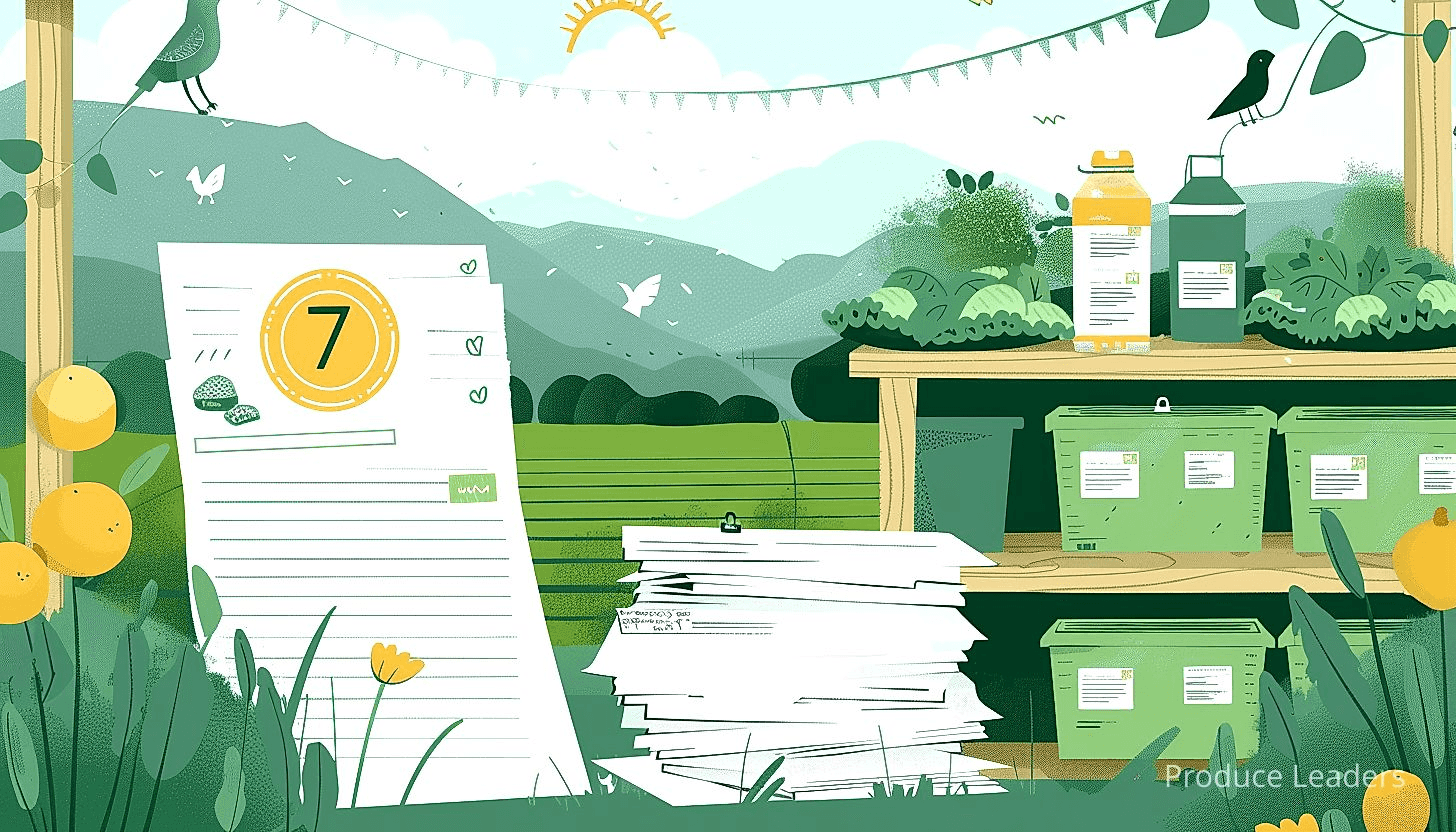
Organic farming techniques can sometimes produce smaller crops, particularly during the initial years of transition, and this perceived risk can deter many farmers from considering organic certification.
One important reason for this yield gap lies in the principles of organic farming itself.
Organic farming emphasizes a model of agriculture that is environmentally, socially and economically sustainable.
These organic methods tend to focus on long term soil health, rather than immediate crop yields, leading to potentially lower yields in the initial years.
The yield reduction, however, is not the same for all crops or all regions.
Let’s dig in into some factors that contribute to this yield reduction in organic farming:
- Fertility management: Organic farming relies entirely on natural sources of nutrients, which are usually slower to release and more challenging to manage than synthetic fertilizers.
- Weed control: Organic methods for weed control are typically more labor-intensive, leading to a potential loss in yield if not managed effectively.
- Pest and disease control: Since synthetic pesticides and fungicides can’t be used, organic farms may suffer a higher incidence of pests and diseases, affecting yield.
Contrary to what many believe, reduced yield is not a permanent feature of organic farming.
Research suggests that with proper management and under certain conditions, organic systems can almost match conventional yields.
While the transitional period can be challenging, many farmers have been able to overcome these hurdles with strategic planning, careful implementation of organic farming practices and patience for their soils to regenerate naturally and the ecosystem to achieve balance.
This, however, requires a deep understanding of the local soil conditions, the farm ecosystem and the crops being cultivated.
Although challenging, the potential yield reduction in the long run may be offset by a healthier farm ecosystem, enhanced soil fertility, and increased farm resilience to climatic variations.
In order to tackle the challenge of potential yield reduction, farmers need to be well equipped with the right knowledge, resources, and support.
7. Keeping careful records for inspections
In Short: Record-keeping is a critical requirement for organic certification to uphold transparency and accountability in organic farming practices. Detailed recording of farm inputs, activities, and sales transactions is crucial to maintain consumer trust in the authenticity of organic products despite the challenge it poses for small-scale farmers.
One core aspect of securing and maintaining organic certification revolves around the meticulous keeping of various records, which must be consistently updated and submitted for inspection.
This is not just a formality, but a critical requirement designed to ensure transparency and accountability within organic farming practices.
These record-keeping practices can be both rigorous and exhaustive, reflecting the weighty responsibility that comes with earning and keeping organic certification.
Audits and inspections are regular occurrences in the organic farming community, intended to ensure ongoing compliance with established organic farming standards.
A farmer’s record-keeping ability often serves as an indicator of their commitment to the organic farming process, and their adherence to the necessary guidelines.
However, these inspection-ready records don’t just manifest overnight. Creating and maintaining them involves a lot of time and effort .
A farmer must systematically track and log every sort of input utilized in their organic farm.
Considering the most critical elements for record-keeping, there are several areas of prime focus. Let’s dig in into those.
- The usage of every feed, seed, and fertilizer should be recorded in accordance with their sources, dates of purchase and application, and the amount used.
- All farming activities, including planting, harvesting, and any sort of soil management strategies would require documentation. These could involve tilling, crop rotation, composting, or perhaps the application of organic manure.
- The specifics of every sale transaction, including buyer details and quantities purchased, must be closely monitored and recorded as well.
Sometimes, however, keeping such detailed records could pose a significant challenge, particularly for individual or small-scale farmers who might lack the necessary resources and logistics to keep up with the bureaucratic aspect of organic farming.
This is in addition to the regular farming activities and responsibilities that already require a farmer’s attention, thus adding another level of complexity to the process.
The level of detail required for effective record-keeping within the context of organic farming can be overwhelming, and even seem excessively demanding. However, it’s crucial to understand that this is for a just cause.
Every bit of this data serves to protect both the integrity of the organic certification process, and the consumers who rely on these organic products for their health and well-being.
Important: Keeping meticulous records, updated consistently and submitted for inspection, is a critical requirement for securing and maintaining organic certification, serving to validate farmers’ efforts towards sustainable farming and to maintain consumer trust in its authenticity.
Despite the challenges associated with record-keeping, it is a non-negotiable component in the journey towards organic certification.
It’s not only instrumental in validating the farmer’s efforts towards sustainable and environmentally friendly farming practices, but also crucial in maintaining consumer trust in the authenticity of organic products.
The Bottom Line
Organic certification offers numerous opportunities for farmers, yet the challenges associated with it are notable.
The intricacies of the certification process, stricter soil management practices, higher production costs, and struggling with non-organic pests all contribute to the obstacles farmers face.
Moving forward, it is imperative that awareness is raised and supportive measures are put in place to help farmers overcome these hurdles.
In the end, with dedication and the right institutional support, farmers can navigate the path to organic certification and contribute to a more sustainable and health-conscious world.



